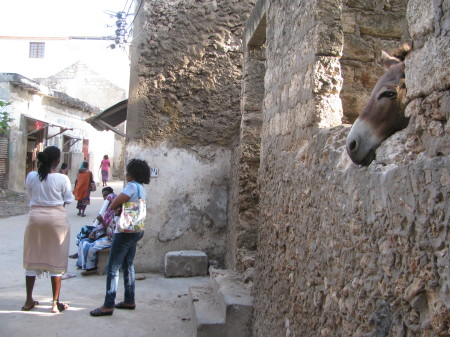- Modern maize varieties going local in the semi-arid zone in Tanzania. OPVs from the 80s are creolizing still, and that’s a good thing.
- Traditional Knowledge Systems, International Law and National Challenges: Marginalization or Emancipation? Well, it looks like it’s the former, but should be the latter. ‘Twas ever thus.
- Valuing insurance services emerging from a gene bank: The case of the Greek Gene Bank. Benefits are greater than costs. Phew.
- Banana genotype composition along the Uganda-Democratic Republic of Congo border: a gene pool mix for plantain and highland bananas. You can still find new stuff. And get funding to look for it, clearly.
- Relationships between the Weedy Amaranthus hybridus (Amaranthaceae) and the Grain Amaranths. Multiple domestications? And why not.
- Genetic Diversity Analysis of Some Ethiopian Specialty Coffee (Coffea arabica L.) Germplasm Accessions Based on Morphological Traits. As ever, useful variation was found. We await its arrival in our morning cup.
- Genetic diversity of Dacryodes buettneri (Engl.) H.J. Lam (Burseraceae), a timber tree in Central Africa. There is some. It could be important, yada yada.
- Malus sieversii: A Diverse Central Asian Apple Species in the USDA-ARS National Plant Germplasm System. The infra-specific taxa may not hold up.
- Exploiting Genomic Resources for Efficient Conservation and Use of Chickpea, Groundnut, and Pigeonpea Collections for Crop Improvement. It’s so close, these guys can taste it. When will we?
- Is genetic information a commons? Maybe it should be.
- Genetic structure and gene flow in Beta vulgaris subspecies maritima along the Atlantic coast of France. The latitudinal cline that wasn’t.
- Restoration of degraded agricultural terraces: Rebuilding landscape structure and process. Restoration is not enough, you need continuous management thereafter. Probably applies to the agricultural biodiversity too, when you think about it.
- Agro-biodiversity in rice–wheat-based agroecosystems of eastern Uttar Pradesh, India: implications for conservation and sustainable management. Resource-poor farmers are better at agrobiodiversity conservation than rich ones. ‘Twas ever thus.
Nibbles: British foods, NBPGR wheat, CIMMYT wheat, Innovation, Ghana cowpea, Nordic grog, Medicinal purposes, Heirloom chocolate, Grünewoche, Dog genomics, Berry go Round, Broad beans, Ag landscapes, Tea and CC
- Google Map of British protected food names. Where’s fish and chips? Or the cream tea. Japan next?
- Indian genebank in the record books for characterizing wheat.
- And with no help from CIMMYT!
- Getting those damn smallholders to innovate already.
- Ghana gets a new cowpea to innovate with. Well, almost.
- And there I was thinking smallholders had been innovating for thousands of years. Even in the frozen north. Winter may be coming, but we’ve got grog. Which you know is good for you.
- As is chocolate, so go ahead and submit your heirloom cacao beans for evaluation. But don’t be tempted to cheat. We’ll know if you are.
- Oh damn, it’s Green Week.
- The story behind the methods used in a recent paper on dog diversity. Wonkish.
- We seem to have slipped off the Berry Go Round treadmill, which means we missed some gorgeous photos of broad beans.
- And another belated treat: UNESCO’s round up of World Heritage agricultural landscapes.
- …one of which is not tea in China, but maybe it should be, before it’s too late.
Nibbles: Agroecology, Genomics meet, African botany meet, Gardens, ISHS, Market chains, KFC in Africa, Wine terroir, Vanilla research, Dye mushrooms, French agrobiodiversity research, Indian genebank, Policy newsletter, Eels, Neolithic grain
- USDA should think about agroecology more. Or at all?
- The latest from PAGXXII. Lots on domestication, genebanks, crop improvement, all that cool stuff.
- There’s also AETFAT going on, and it’s just as cool. Maybe more so. Though less socially networked, I guess.
- How public gardens should build up living plant collections. You’d have thought they’d know.
- An update on plant genetic resources from ISHS. Lots happening…
- How to support agrobiodiversity through sustainable sourcing.
- KFC must have read that slideshare above.
- Breaking down the terroir. And not for the first time.
- Does vanilla have terroirs? I bet it does. Should ask the world’s expert.
- Dye mushrooms? Are you kidding me?
- ARCAD, DIADE: No matter how you spell it, lots of French interest (and money) in crop and livestock genetics.
- Likewise in India, it looks like from this piece on NBPGR.
- The Bioversity Policy Unit is apparently still alive and kicking.
- European eels a conservation success story?
- Let the ancient DNA sequencing begin!
Dorian Fuller on domestication, and not only of donkeys
Speaking of Dorian Fuller, in addition to his always fascinating The Archaeobotanist blog, he also curates five — count them — topics on Scoop.it, reflecting the wide range of his interests. Unlike many others on Sccop.it, including me, Dr Fuller always provides trenchant commentary on the material he posts. Browsing through his stuff, I ran across a post on a paper on donkey domestication which I had missed last year. I hope he won’t mind if I reproduce his insights here, to give a flavour of what you can expect if you follow him.
Donkey’s are undoubtedly one of the most important domesticates from Africa, but less well-documented then cattle or many crops, as they have rarely been food sources. This article provides updated review of the archaeology and genetics of donkey, including some ancient DNA evidence such as Uan Muhhgiag donkeys from prehistoric Libya. Of interest is the argument that reports of “wild” donkeys in the Levant or Arabia, such as the quantities from Ash-Shumah in Yemen, are early domesticates and not endemic wild populations. If this is the case then it would put donkey herding back to the early Holocene before 6000 BC, putting them in competition of Bos africanus for the earliest African domesticates [excluding Pleistocene bottlegourds]. Alternatively, as mapped in Boivin & Fuller (2009 in J. of World Prehistory) we extend the map of wild donkeys through the Sinai and down the west coast of Arabia to make the Ash-Shumah remains those of hunted wild animals. The latter would open the possibility of southern Levant donkey domestication. The current review by Kimura, Marshall and colleagues makes an interesting but inconclusive case against this. (Historical linguistic evidence does tend to point to African domestication among Afroasiatic/Cushitic sub-groups). As this paper concludes there is a need for more targetted research on donkeys!
Which also allows me to post one of the pix from my recent holiday on Lamu island off the coast of Kenya, where donkeys are of course the only form of transportation.
Prof. David Harris RIP
Prof. David Harris, one of the giants of the study of the origins of agriculture, died during the holiday period. He was Professor Emeritus of Human Environment at the Institute of Archaeology (UCL) and a former director of the institute (1989-1996). Dorian Fuller, a friend and colleague at the institute, has an informative and touching piece about Prof. Harris on his blog. The comments there, and on my re-posting of Dr Fuller’s piece (see below), are ample evidence of Prof. Harris’ impact and legacy.

